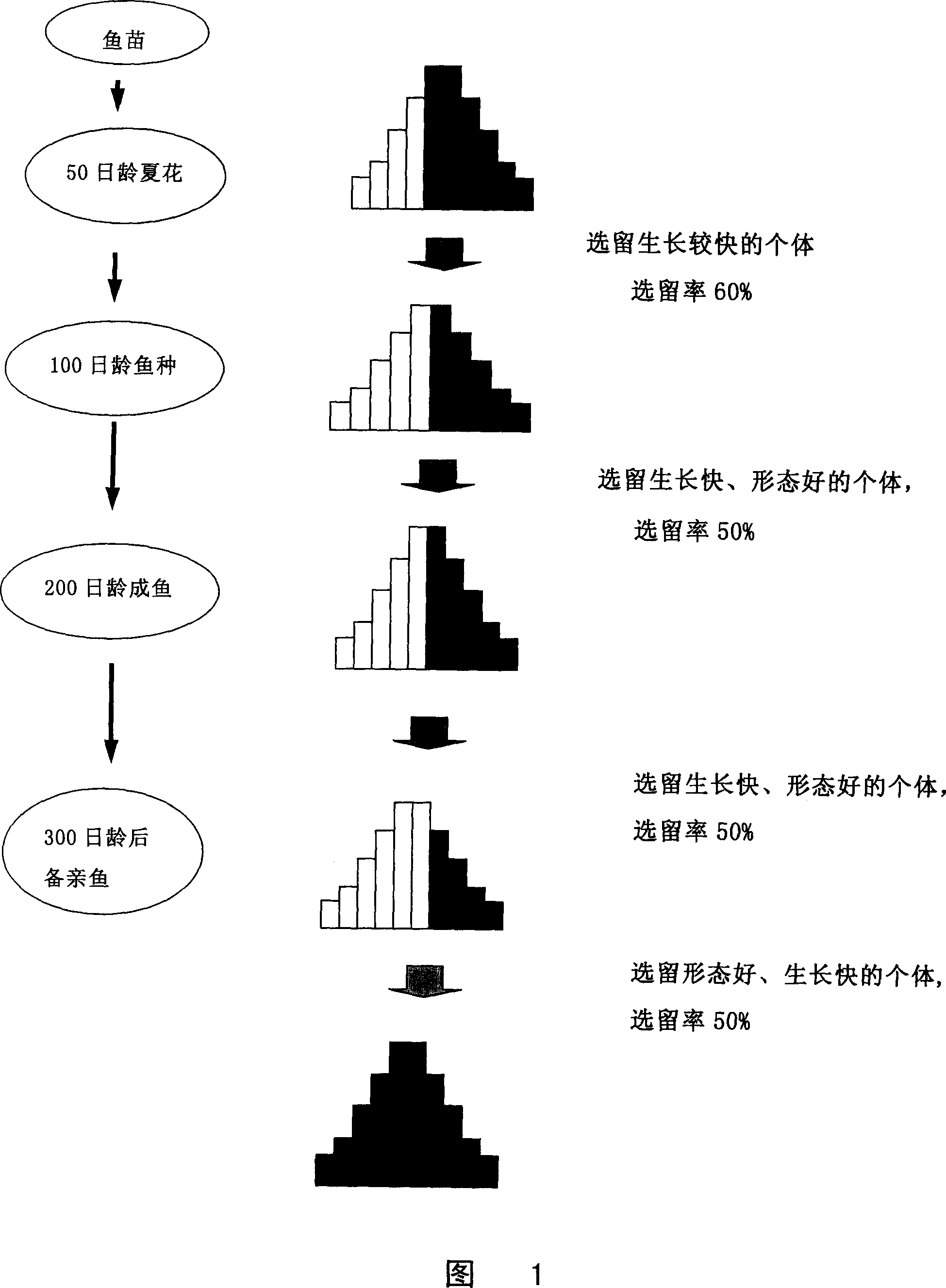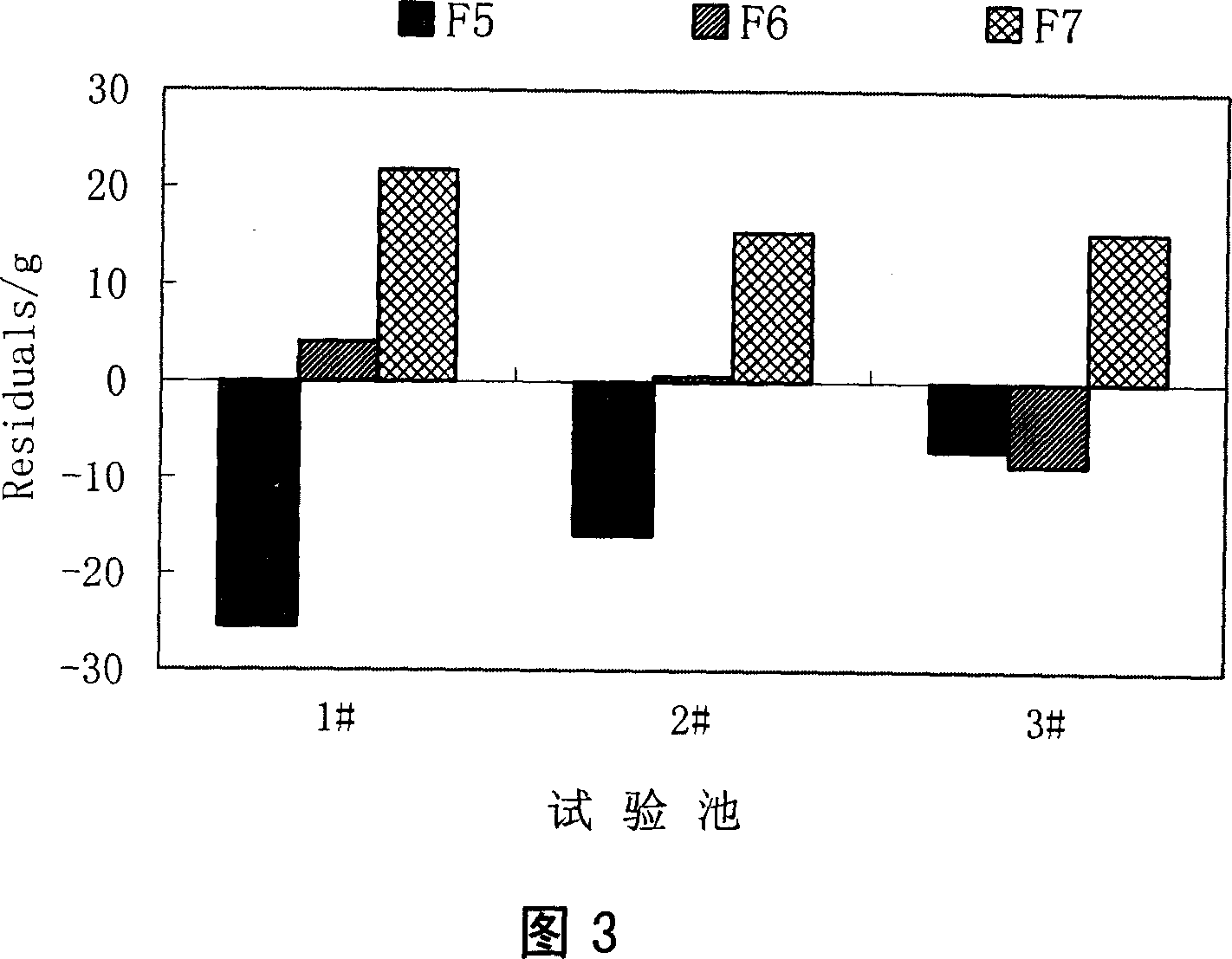Novel selecting and breeding method for gift strain of nile tilapia
A technology for Nile tilapia and female fish, applied in animal husbandry and other directions, can solve problems such as insufficient genetic stability
- Summary
- Abstract
- Description
- Claims
- Application Information
AI Technical Summary
Problems solved by technology
Method used
Image
Examples
Embodiment 1
[0045] The establishment of embodiment 1 breeding line and control line
[0046] 1. Determination of the basic population for breeding
[0047] Because the rich strain Nile tilapia has obtained unanimous good evaluation at home and abroad, and begins to promote all over the world, so it is determined to select the rich strain Nile tilapia introduced in 1994 as the selection base population of the present invention.
[0048] 2. Establishment of selective breeding lines
[0049] At the end of 1996, in the three test bases, the Nile tilapia with standard body shape and healthy Nile tilapia were selected to establish breeding lines. 455 females and 233 males were selected in the national Qingdao tilapia breeding farm; 70 females and 31 males were selected in the national Guangdong tilapia breeding farm; selected in Bengbu Fisheries Research Institute of Anhui Province 300 females and 100 males were caught. A total of 825 female fish and 364 male fish.
[0050] 3. Establishment...
Embodiment 2
[0052] Embodiment 2 generation by generation selection
[0053] Gifu strain Nile tilapia is a small fry (summer flower) of 2-3cm when it grows to the age of 50 days; when it is 100 days old, it is a small fish of 10-15cm; More than 24cm, body weight more than 480g; at the age of 300 days, the body length of adult fish is more than 28cm, more than 750g.
[0054] Adopting the group selection method, it takes about 1 year from fry cultivation to broodstock, during which four selections are carried out, and the total selection rate is 6% (60% × 50% × 50% × 40% = 6%) (see Table 1 ,figure 1). There are three selection criteria: one is the growth rate, that is, the fastest growing fish is selected; the other is the morphological characteristics, and those with inconspicuous morphological characteristics will be eliminated; the third is the genetic purity.
[0055] steps
age (days)
selection criteria
Selectivity (%)
1
2
3
4
50
100 ...
Embodiment 3
[0059] Each year's growth performance evaluation in the breeding process of embodiment 3
[0060] 1. Growth performance evaluation of F3 and F0 in 2000
[0061] In three test bases, the comparative test of the growth performance of the breeding line F3 and the control line F0 was carried out at the same time. A completely randomized block design was used. F3 and F0 have fin-cut flags and are polycultured in the same pond. There was no significant difference in body weight between F3 and F0 when stocking. The Qingdao experiment began on June 7, 2000, with three repetitions, and the flowing water cement pool used summer flowers that multiplied early in the year, with an initial weight of 0.021-0.027g; the Guangdong experiment began on June 3, 2000, and three Repeatedly, the still water cement pool used the summer flowers that multiplied early in the year, and the initial weight was 1.22~1.40g; the Bengbu experiment began on June 8, 2000, four repetitions, the still water ceme...
PUM
 Login to View More
Login to View More Abstract
Description
Claims
Application Information
 Login to View More
Login to View More - R&D
- Intellectual Property
- Life Sciences
- Materials
- Tech Scout
- Unparalleled Data Quality
- Higher Quality Content
- 60% Fewer Hallucinations
Browse by: Latest US Patents, China's latest patents, Technical Efficacy Thesaurus, Application Domain, Technology Topic, Popular Technical Reports.
© 2025 PatSnap. All rights reserved.Legal|Privacy policy|Modern Slavery Act Transparency Statement|Sitemap|About US| Contact US: help@patsnap.com



